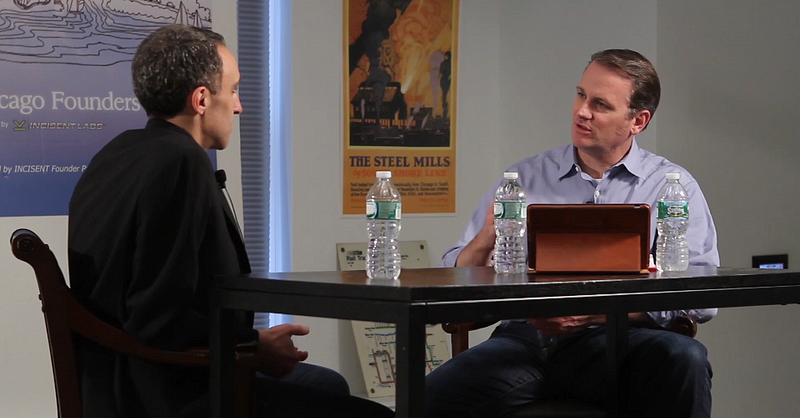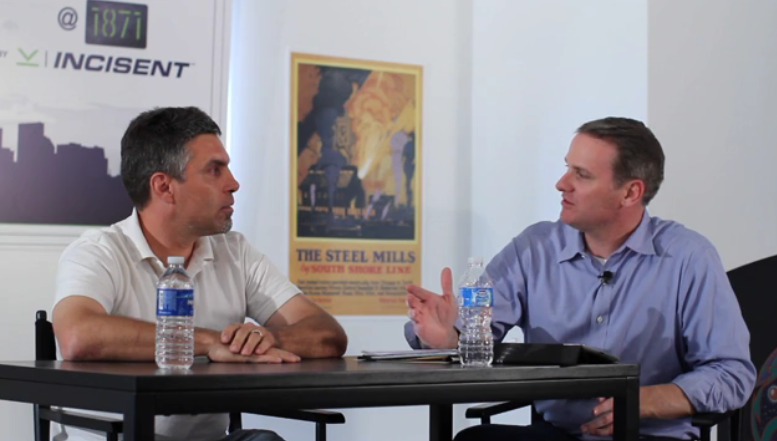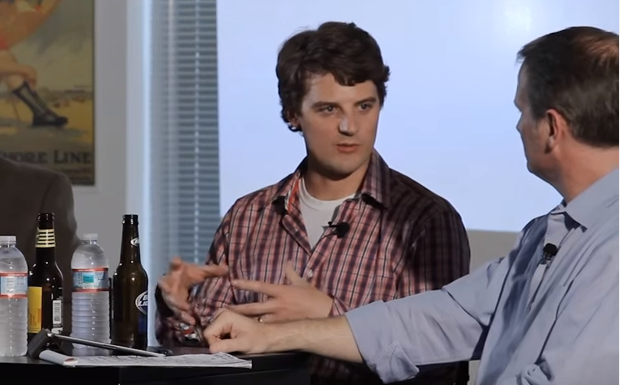What Four Recent $1 Billion+ Chicago Startup Exits Taught Me About Hyper-Growth
What do founders of startup unicorns do differently?
I couldn’t help but ask this question as I reflected on the $1 billion+ IPOs/acquisitions of three Chicago companies whose founders I’d recently interviewed in my role as host of Founders’ Stories @ 1871, Chicago’s digital startup hub.
Each of these companies — GrubHub, Braintree and Fieldglass, as well as formerly public OpenTable — had great founding teams, and I wanted to see if I could find commonality across the group, as well as patterns of other successful founders from the series we host on Chicago Founders TV.
Around the same time that I was starting to consider these patterns of success, I discovered an analysis of nearly 3,000 software and online-services companies by McKinsey & Company called Grow Fast or Die Slow. It provided me with an interesting framework to apply to the success of our billion dollar Chicago founder companies.
McKinsey’s findings focused on three factors:
- Growth trumps all as a predictor of long term success and is far more important than margin in both early stage and scaling startups
- Sustaining growth is extremely hard
- There is a repeatable recipe for sustained growth
I set out to examine these Chicago founders’ path to $1 billion+ valuations utilizing the core of McKinsey’s framework of critical growth enablers they found in “supergrower” companies: market, monetization model, and rapid adoption. Below are some key points from our Chicago founders that test and illustrate each concept:
Critical Enabler #1: Pick the right market. Ideally it’s limitless.
By initially tackling the market for restaurants that take reservations in major U.S. cities, OpenTable Founder Chuck Templeton chose a market that enabled OpenTable to build a business that sold to Priceline for $2.6 billion. When it sold, OpenTable took reservations in over 27,000 restaurants nationwide with most international markets still untouched.
Matt Maloney, co-founder of GrubHub, whose approach focused on any restaurant that offers take-out or delivery, expanded on OpenTable’s market by a factor of 10. Their primary target market consists of nearly 350,000 independent restaurants, and the company believes that more than a quarter of all domestic spend at independent restaurants is for take-out and delivery.
The power of huge markets is exemplified by GrubHub’s hyper-growth — they only had $8.3 million in revenue in 2010 yet enjoy a $1.8 billion market cap today.
This doesn’t mean that you should pick the biggest market right away. Instead, start with a niche that can lead to the path of a limitless market. It’s often critical to start small in order to get the fire going. Even Internet giants like Facebook and PayPal started with a limited market in the beginning (Facebook focusing on students at America’s top universities, PayPal focusing on eBay sellers) before expanding.
Critical Enabler #2: Define a monetization model that can capture demand without stifling it.
Our friends at GrubHub will tell you unapologetically: At GRUB, there is no consumer revenue model. This is because GrubHub’s revenues come from the restaurants that are happy to pay for the incremental business that GrubHub brings them. By making it free to the consumer and providing incremental business to restaurants, GrubHub has kept friction to a minimum while speeding up adoption and growth.
Another Chicago Founders’ Stories guest, OkCupid and SparkNotes founder and Match CEO Sam Yagan, explained why there have been so few new players in the dating site world. As with other two-sided networks, dating sites experience the classic chicken-egg problem of needing scale on both sides to create liquidity.
To overcome this challenge, OkCupid began first as a personality testing site — a unique and creative approach to customer acquisition — in order to bring in users and build the supply side of the market. When they introduced dating, it was free of charge — and still is, today. The large population of users plus the free nature of the platform has kept new competition at bay.
Critical Enabler #3: Focus on rapid adoption.
The most notable example of rapid adoption was Bryan Johnson at Braintree. In 2011 Braintree brought in $9.9 million in revenue. Two years later the company was sold to PayPal for nearly $1 billion (including earn out).
There were two things that Braintree did to achieve this skyrocketing growth:
First, they obsessed about making their platform extremely simple for e-commerce sites to use, achieving significant adoption in a short period of time.
Second, they were an early and effective innovator in mobile, courting mobile developers, and becoming the favorite payments integration for mobile developers. As mobile commerce grew to command a larger share of spending, Braintree’s revenues followed suit.
So what can we take away from all of this?
- The three critical enablers highlighted by McKinsey give entrepreneurs the “what” to focus on and nail in order to build a world-changing company.
- First-time entrepreneurs are at a real disadvantage in figuring out the “how” if they don’t have a mentor who has already succeeded in doing so.
The good news is that Chicago founders are among the best of the best. Check out some of their best advice for Chicago entrepreneurs and have a look at our library of full videos at ChicagoFoundersTV.com or on my blog, Cooler by the Lake.




